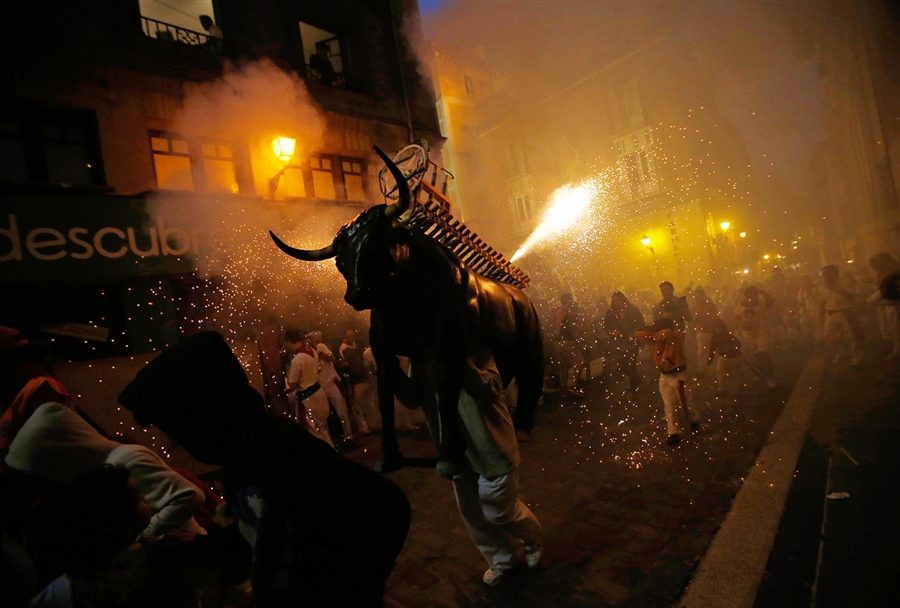San Fermin Festival Pamplona Spain
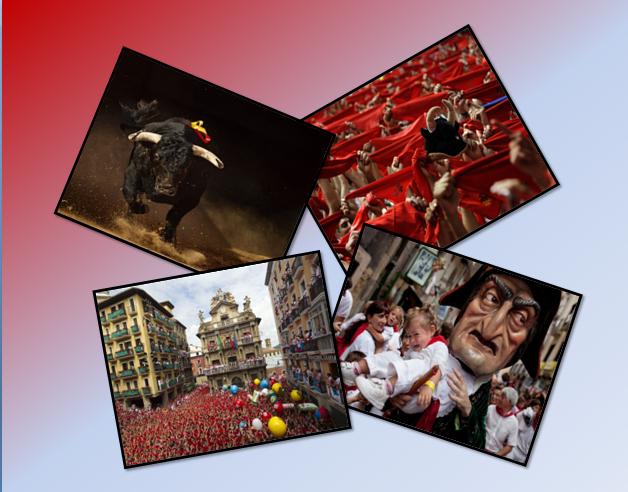
The most chaotic, frenzied and impractical experience of festival can only be experienced in the San Fermin Festivities Pamplona – an ancient Spanish festival. Every year in the month of July this Running of the Bulls celebration is kicked off with several injuries, still people never look for an excuse to avoid this festivity. In the honor of San Fermin – the catholic saint – this electrifying yet joyous event is organized. Thousands of Spanish people along with tourists from all over the globe gather together in the square and wait for the mayor’s announcement to officially permit the gala to set in motion. As soon as the rocket is launched in the air the party begins. Due to the popularity of the event overcrowding becomes a major issue but the security available at the venue try their level best to keep things under control.
Instructions
-
1
History:
Every year on the 7th of July, in Pamplona, Spain the only color that is made visible all over the city is red so that the bulls get enraged and the festival starts. The combination of two different medieval events is the actual origin of this celebration.
The first bull fight was documented in 14th century when cattle merchants brought their animals to the town. On the 10 of October religious ceremonies were organized to honor the saint. Later in the year 1591 this festival was transferred to the 7th of July so that the sacred ritual and the fair take place at the same time. The actual reason for shifting the event was weather condition. Initially the whole event lasted for two days but then it was extended until 10th and later on until 14th. With time more ways were introduced to fully enjoy this festival a Giant Parade was started in the 19th century, bullring was officially constructed in 1844 although the running appeared in 17th and 18th century.
The festival possesses worldwide fame, every year great number of foreign visitors arrive at Pamplona, Spain and take home unforgettable memories and experience.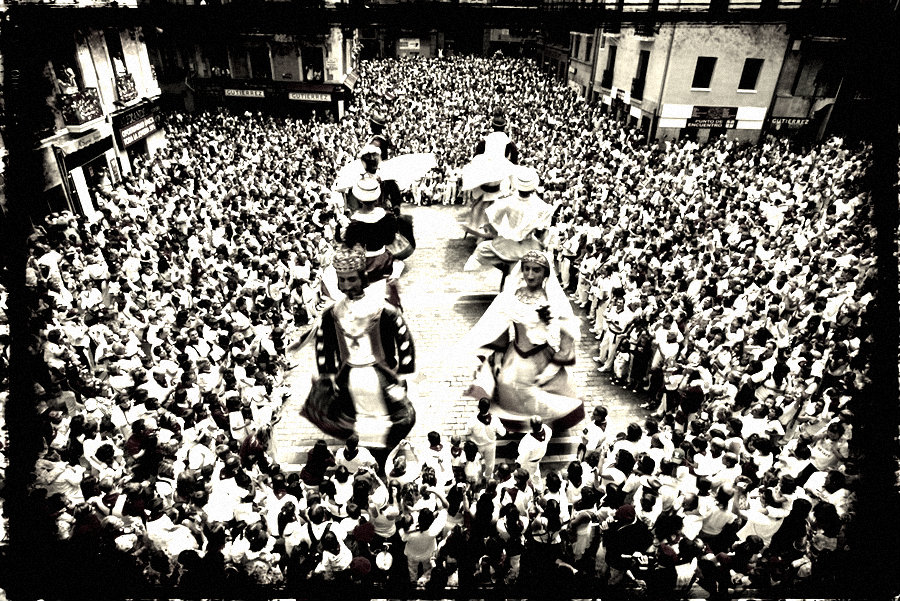
-
2
Events:
Events held between 6th and 14th July are either single day events or daily events – single day events are scheduled once in seven days whereas, daily events are scheduled everyday till the festival ends.
Daily Events:
- Running of the bulls
- Giants and big-heads parade
- Traditional sports
- Bullfight
- Fireworks
Single Day Event:
- Chupinazo
- Riau-Riau
- Saint Fermin procession
- Struendo
- Pobre de mí -
3
Chupinazo
On the 6th of July 12:00 noon a rocket is launched in the air from the city hall balcony which is viewed by thousands of people in the square and several other locations in Pamplona. Pyrotechnic Chupinazo – the opening ceremony of the festival – first happened in 1941. The city mayor decides who will launch the rocket. But in 1979 a new rule was announced that every year a new person from the city council will do the honor.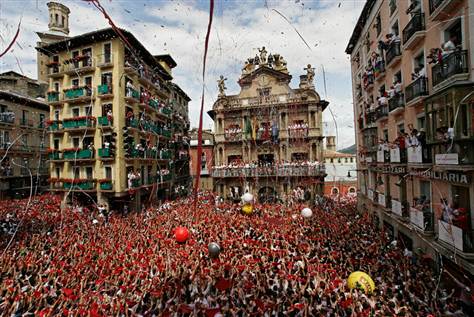
-
4
Riau-Riau
This mass activity names as Riau-Riau takes place on the 6th of July. Council members parade from the city Hall all the way to the nearest chapel which is dedicated to Saint Fermin. The participants of the parade cover the distance by dancing to the Astrain Waltz. This tradition first took place in the year 1911. For the sake of public order in 1992 this festivity was removed from the calendar, because the political activists took advantage from the throng of people and endorse conflicts with the authorities. Between 1996 and 2012 the orgainzers tried their level best to involve this celebration but it has always been cancelled due to aggressive and brutal clashes.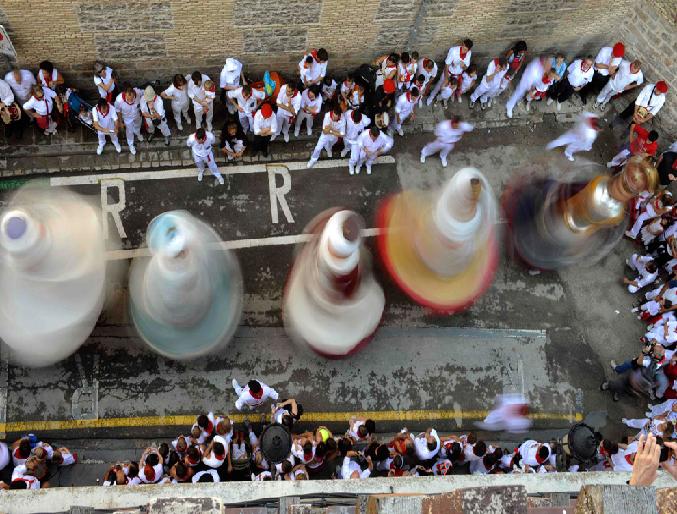
-
5
Saint Fermin procession
The statue of Saint Fermin is accompanied by thousands of people in the Saint Fermin procession. This march takes place on the 7th of July and passes through the old part of Pamplona. Street enteritainers and dancers make this parade livelier. The city mayor along with religious authorities also participates in this parade. For the saints Jota – an ancient traditional dance – is performed. In the Saint Cernin well a rose is offered and a huge paper mache puppet – gigantes – is brought inside by a man, during this whole dances are held and the cathedral bell Maria rings.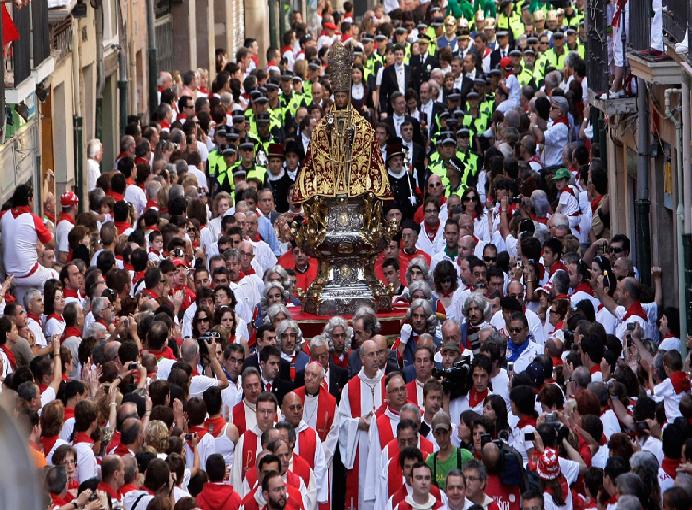
-
6
Struendo
El Struendo" means roar. This event has been a part of Pamplona festival for past 50 years. Each year this event is celebrated on a different day. When the clock strikes 11:59 pm people gather around the Town Hall and scream and make noise as forcefully as they can for several hours.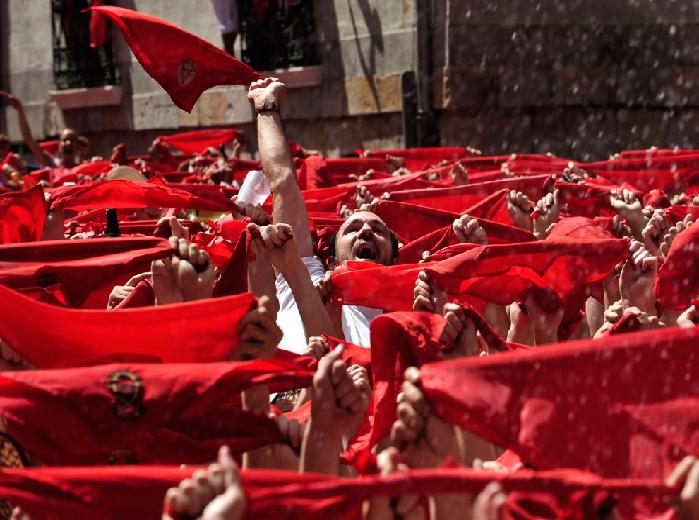
-
7
Pobre de mí
This is basically the closing ceremony which is held at midninght on the 14th of July. In the Town Hall plaza people gather and sing mournful notes Pobre de Mí, which means Poor Me. As soon as the mayor declares the closing of the festival people remove the red handkerchief from their neck.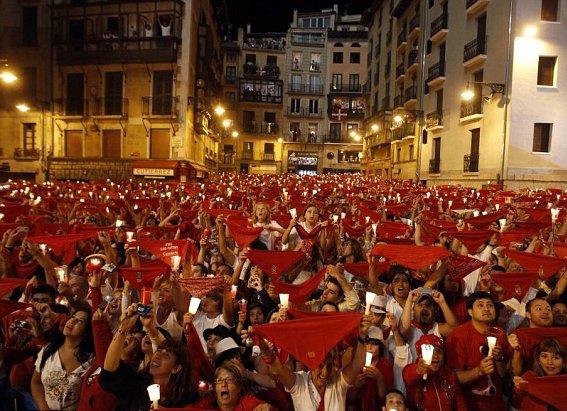
-
8
Running of the bulls
Bullrun is held between 7th and 14th of July. This dangerous activity involves six bulls accompanied by six oxes. Oxes involved in this race are usually white and brown, they are responsible to guide the bulls towards the plaza.
At 8:00 pm the first firecracker is released, which means the bulls are on the loose. People have to run through 825 meter long narrow street all the way to the Pamplona’s bullring. When people hear the sound of the third cracker it means the last bull has been released. Shepherded wearing green T-shirts holding long poles are also involved in the race in order to guide the bulls and oxes. The bulls are in the arena, this is indicating by the fourth cracker and the fifth cracker is released when the bulls are in their bullpens. Then cows are released in the arena which tosses the participants.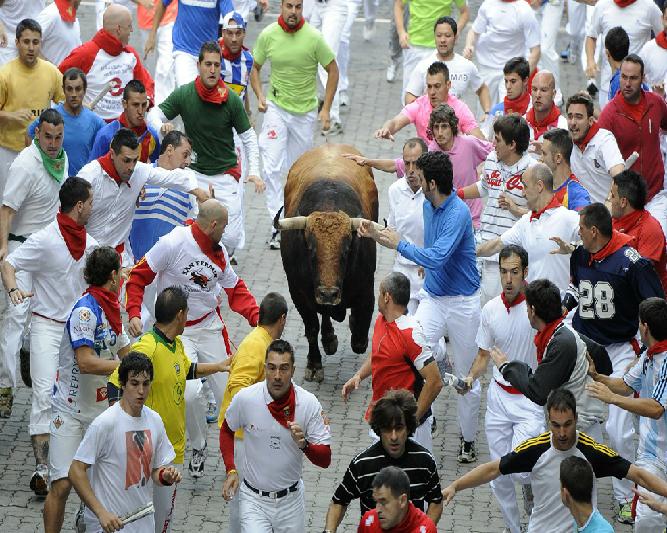
-
9
Giants and big-heads parade
Everyday eight giant figures which were built in 1860 earlier by Tadeo Amorena a Pamplona painter are brought in the Giants and big-heads parade. These giant figures are known as gigantes y cabezudos – in English it means big heads. These big heads represents queens and kings of various races like, Africa, Europe, America and Asia. A dancer is goes in the wooden structure and carries the 4 meters long figures.
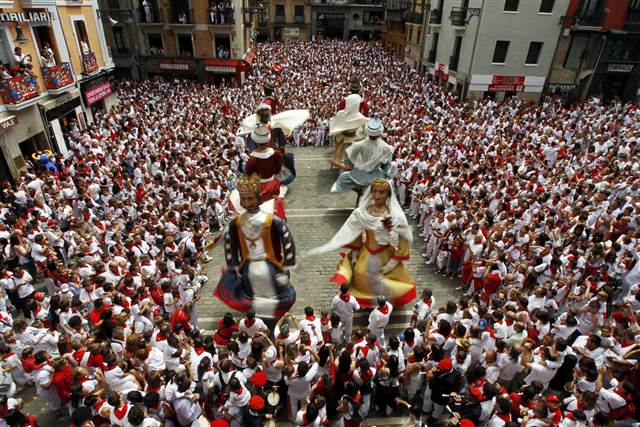
-
10
Traditional sports
Various competitions and exhibitions are organized daily in the Plaza de los Fueros. These events are related to Basque rural sports. Sports like wood cutting, hay bale and stone lifting are organized. Besides that in one of the courts of the city the Jai Jai tournament of Sanfermin is scheduled.
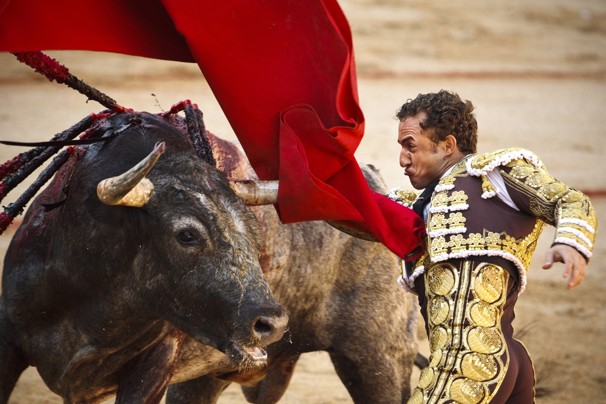
-
11
Bullfight
Right after the bull race bull fight is organized. The six bulls involved in the race are killed after the fight. The event starts at 6:00 pm.
-
12
Fireworks
A spectacular firework is organized every night at the citadel park. In 1595 this was made part of the celebration. But in the year 2000 it has been converted into a competition. Uncountable people eagerly come to see the phenomenal fireworks.